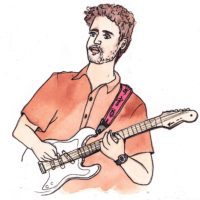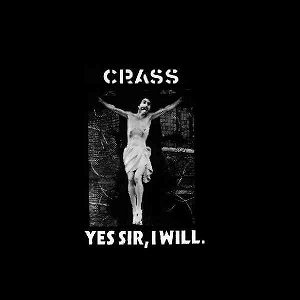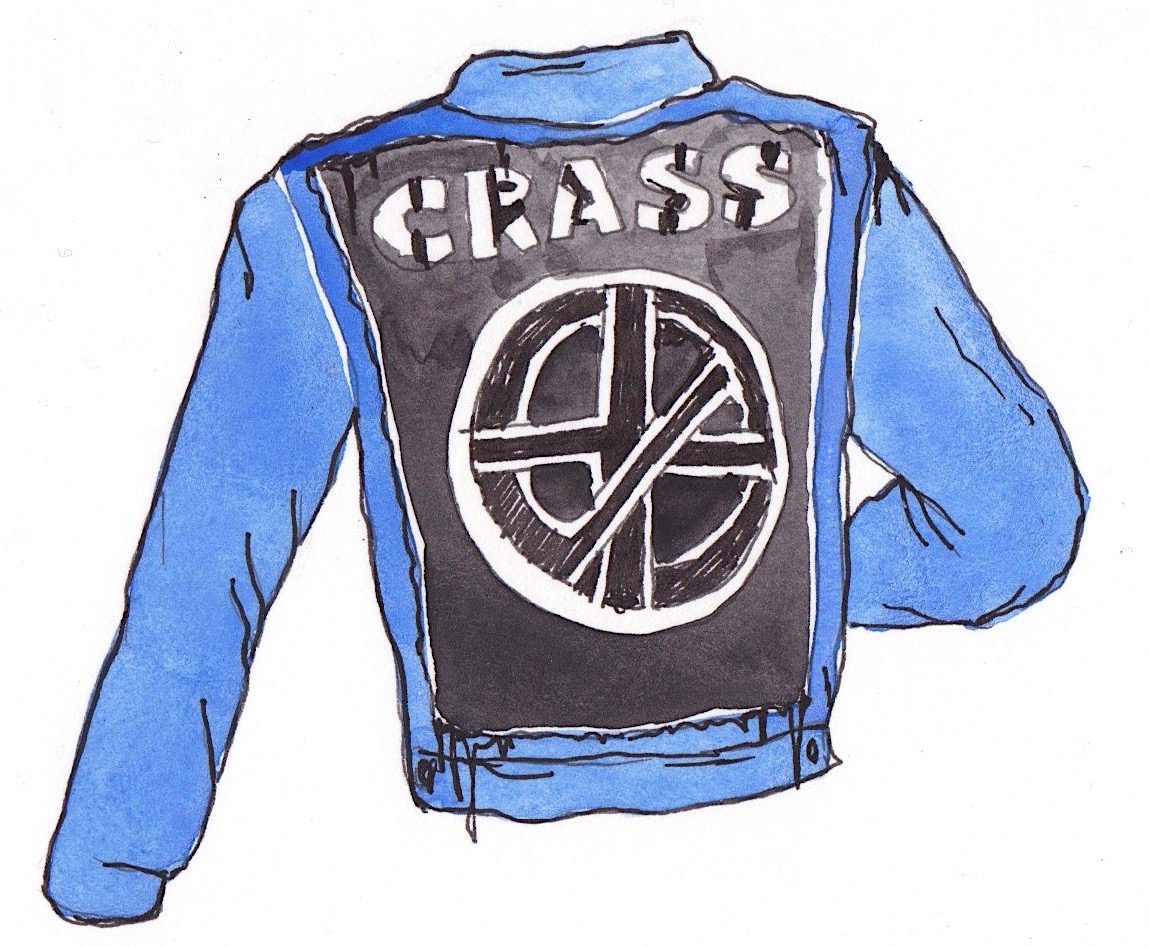I became interested in music before I got into punk. The Beatles was probably my first favorite band, and then I heard music on the radio, current bands of the time like Oasis and Smashing Pumpkins—which was also my first concert.
But when you’re young, let’s say around eighth grade, all music is so new, and fresh, and embedded with meaning, that you start looking for subcultures, a special niche that says something about you, your identity, what you’re going through.
I saw cool older kids in the high school with punk patches on their jackets. One of the things that I was always drawn to was the iconography and graphic nature of punk. I was familiar with the Black Flag bars for years before I ever heard them, same with The Misfits skull.
My best friend, Mike, and I started our first band together. As part of our “cultural field research” we’d share all the new music we discovered. Mike’s mother was the visual arts teacher at the arts magnet school and she had a student who knew her son was getting into punk, so he gave her a mix-tape to give to Mike.
Mike said, “You gotta come over and listen to this!”
We played it nonstop, just kept flipping over the tape. It was like our little treasure. It felt important to have allies in the war against conformity so we didn’t feel so alienated, and we tried to get our friends into it too. There was a pretty good smorgasbord of entry-level stuff on that tape, a lot that was familiar but also some that was new: Dead Kennedys, Cock Sparrer, UK Subs, Subhumans, and Crass.
The Crass song was “Do They Owe Us a Living?” It was the first song I heard from the album The Feeding of the 5000. The anger was real, raw, and tangible. It didn’t sound like any of the other stuff. It was super minimal, just inarticulate, trebly guitars and a drum roll. I was particularly captivated.
I was ready to move past the veneer of punk. That summer my mother was incarcerated. Rules were more lax around the house. My father was working and I stayed out late, came and went as I pleased. I was a young guy who was angry at the world, angry that my mom was in jail, just bitter and resentful towards other kids who had “normal” lives.
My dad had lived in Vermont in the late 60s/early 70s, and he had the idea to take my brother and me to Burlington for a getaway. I went to a record store there called Vinyl Destination. I spent a lot of time browsing records and CDs, and I came across Crass’s album Yes Sir I Will.
There’s a crucifix, and above it there’s an image that’s been collaged over it of a soldier that’s returned from the Falklands War. It’s a reference: Prince Charles says, “Get well soon” to a guy whose entire face has been burned off. And the young brave soldier says, “Yes Sir, I Will.” That’s how the record ends.
Having been an altar boy, having been raised religiously, the sacrilege was not lost on me. It felt like something I should cling to, like the ultimate type of rebellion.
We didn’t have a record player with us, so I couldn’t listen until we got home. When I finally had a chance to hear it, I remember intensely disliking it.
I’d known punk to be fast and abrasive but still hooky and catchy. This was a two-sided record with essentially one song that’s freeform, improvised, mostly spoken word over a wall of noise. But I’d already invested, literally and emotionally. I had to keep listening.
And so I kept listening over and over again, and eventually I realized this album was challenging my idea of what punk is. For Crass punk was already spoiled by commodification. They were determined to make it a real rebellion, not just music. This record was important because of the message, the meaning. It felt actually dangerous. That was big for me.
I became a vegan, a concept that was introduced to me on this record. It also made me more aware of inequality with respect to wealth, power, and race. I found an outlet for my anger that wasn’t abstract and directionless. By separating punk from a specific aesthetic, it opened up possibilities. At the same time, I couldn’t get my friends into it—not even Mike. So for a time the band was mine, my secret.
Then, at some point, I got a Crass patch, sewed it onto my jacket, and I wore it to freshman orientation in college. A guy came up to me and said, “Hey you listen to Crass!” We went back to his dorm and he asked me if I heard of Chumbawamba. I was like, “Tubthumping, they suck.” He was like, “No, you gotta hear their early stuff.” He played their 7-inch, which was put out on Crass Records. It blew my mind!
That was the last time in my life that I remember where if you saw someone who looked like they were into punk, you went up and talked to them. You had no choice because they signaled they were a comrade. Now all of these subcultural signifiers can get deployed on social media, where they’re picked up as superficial style. It’s the same with digital music. It’s all at your fingertips, but often out of order and context.
But thankfully physical media has been coming back for a while, and it’s no longer strange to see a shelf of records in someone’s apartment. Have a dialogue with the record sleeve and the art. Beyond the aesthetics, look for the message in the lyrics. There is so much happening just beyond the surface.
***
Wanted/Needed/Loved: Musicians and the Stuff They Can’t Live Without is an illustrated column where musicians share the stories behind meaningful objects. As told to Allyson McCabe and illustrated by Esme Blegvad.
***
Texas native Andrew Savage is the co-frontman/guitarist of the acclaimed New York post-punk band Parquet Courts. As A. Savage, he’s just released his solo debut, Thawing Dawn, which was recorded with members of Woods, Ultimate Painting, PC Worship, EZTV, and Psychic TV. The album is an introspective collection of songs about being on the inside of love. Savage is currently on tour.







